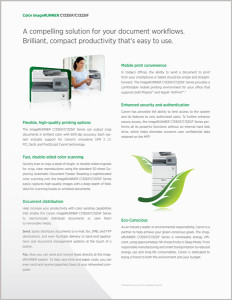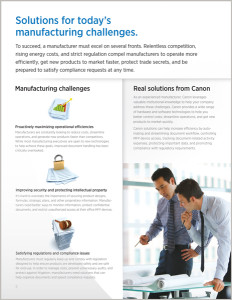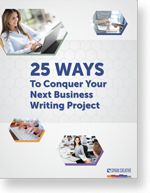
1. Listen Well
As you begin, remember you’re not just writing product copy. You also want to understand the goals of all internal audiences. Come prepared to ask questions. If you’re not getting all you need, follow up with a “Tell me more.” If you’re lucky, you’ll hear from a couple of folks who are passionate about the solution or technology. Listen carefully. Ask who will contribute comments on the drafts you develop. If the CEO has a high-level vision for the company’s voice or brand, it’s extremely valuable to know what that is from the start.

Product copy should be tight yet dynamic. Readers need details but must also clearly understand why your product is the best investment they can make.
2. Speak to Your Audience
Sometimes this isn’t given the focus it deserves. Put the customer at the center of your communication. Internal product managers who also oversee marketing copy will be inherently busy. A good technology copywriter will make time to collaborate, helping to build a profile of the most likely and responsive prospects. The better you can build a composite of these people – and write to them – the more effective your copy will be.
3. Keep It Simple
Just because you “talk tech” doesn’t mean you shouldn’t keep your words simple and direct. Here, it may serve you well to scale back on precious technical terms. Copy that’s clear and easy to understand helps you cast a wider net. That really counts when your audience may include potential users and decision makers with purchasing power.
4. Leverage Action
Guide people through your ideas by keeping the conversation lively. Verbs help you combat indifference and disinterest.

Succinct copy with active, benefit-oriented headlines should keep readers engaged with your material — even if they are just scanning through it quickly.
5. Weave In Benefits
For a moment, be skeptical as you consider your product or service. Why should anyone care about it? How will it help others to save money, save time, or make their day easier? This process requires deeper thought and more revisions. But the work of transforming features into benefits will help better position your product. On the other hand, take care to strike a reasonable balance. If a product is complex, perhaps mixing in a simple feature list can have more impact than a benefit.
6. Offer Examples
Let’s face it. Anytime you talk tech, ideas are likely to get abstract pretty quickly. The more clearly you paint a picture with words, the better. Put yourself in your reader’s shoes. Now imagine how you’d describe the positive, real world impact your tech solution may have on their work life or home life.
7. Understand the Technology
It can be a huge advantage when a writer has first-hand experience with a tech solution or understands how it works under the hood. You don’t want to shatter the illusion of a product’s “magic” or bore folks with an overly-technical explanation. But a writer who works to understand the inner-workings of your products wields far more power communicate their brilliance.
Get Your Free Business Writing eBook Now
Need to move forward on a difficult writing project? This practical guide will help you get started. Send a link directly to my inbox:
Sources may include:
How to write a brochure: advice from an advertising copywriter, John Kuraoka, Kuraoka.com
8 Tips to Great Brochure Copywriting, Freelance Copywriter’s Blog


